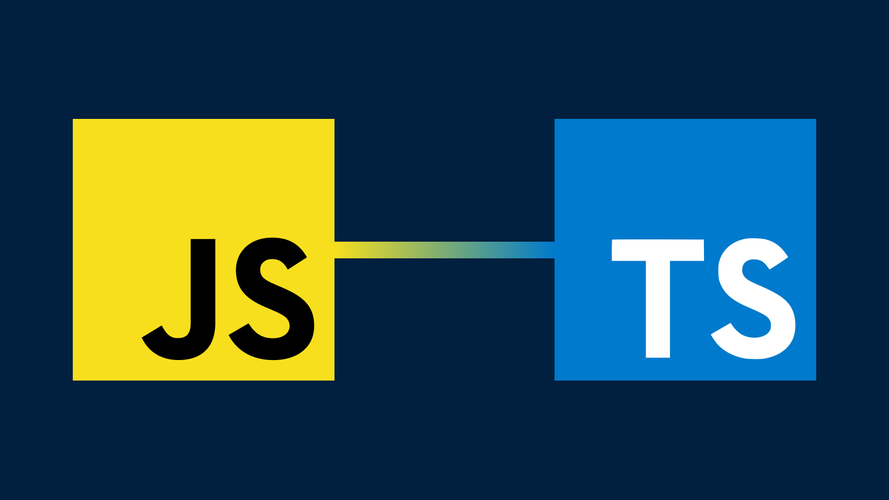
如果弹幕内容只支持文字的话,只需要借助 canvas 绘图上下文的 fillText 方法就可以实现功能了。
但如果想同时支持渲染图片和文字的话,需要以下几个步骤:
- 设计一个面向用户的数据结构,用于描述弹幕应该渲染哪些文字和图片;
- 框架内部对上述数据结构进行解析,解析出文字部分和图片部分;
- 计算出各个部分相对于弹幕整体左上角的 top 偏移量和 left 偏移量;
- 弹幕渲染时,首先计算出弹幕整体左上角距离 canvas 原点的 top 和 left(这块的计算是后续的内容,后续再说),然后再根据弹幕整体的 top 和 left 结合各个部分的 top、left 偏移量循环渲染各个部分。
整体逻辑如下图所示:
相关 API 可以看官网的这里:https://fly-barrage.***lify.app/guide/barrage-image.html
下面着重说说上面几点具体是如何实现的。
1:面向用户的数据结构,用于描述弹幕应该渲染哪些文字和图片
设计的数据结构如下所示:
typescript">export type BaseBarrageOptions = {
// 弹幕的内容(eg:文本内容[图片id]文本内容[图片id]文本内容)
text: string;
}
例如:“[0001]新年快乐[0003]”,它的渲染效果就是如下这样子的。
2:对上述结构进行解析,解析出文字以及图片部分
这块对应源码中的 class BaseBarrage --> analyseText 方法,源码如下所示:
/**
* 弹幕类
*/
export default abstract class BaseBarrage {
/**
* 解析 text 内容
* 文本内容[图片id]文本内容[图片id] => ['文本内容', '[图片id]', '文本内容', '[图片id]']
* @param barrageText 弹幕文本
*/
analyseText(barrageText: string): Segment[] {
const segments: Segment[] = [];
// 字符串解析器
while (barrageText) {
// 尝试获取 ]
const rightIndex = barrageText.indexOf(']');
if (rightIndex !== -1) {
// 能找到 ],尝试获取 rightIndex 前面的 [
const leftIndex = barrageText.lastIndexOf('[', rightIndex);
if (leftIndex !== -1) {
// [ 能找到
if (leftIndex !== 0) {
// 如果不等于 0 的话,说明前面是 text
segments.push({
type: 'text',
value: barrageText.slice(0, leftIndex),
})
}
segments.push({
type: rightIndex - leftIndex > 1 ? 'image' : 'text',
value: barrageText.slice(leftIndex, rightIndex + 1),
});
barrageText = barrageText.slice(rightIndex + 1);
} else {
// [ 找不到
segments.push({
type: 'text',
value: barrageText.slice(0, rightIndex + 1),
})
barrageText = barrageText.slice(rightIndex + 1);
}
} else {
// 不能找到 ]
segments.push({
type: 'text',
value: barrageText,
});
barrageText = '';
}
}
// 相邻为 text 类型的需要进行合并
const finalSegments: Segment[] = [];
let currentText = '';
for (let i = 0; i < segments.length; i++) {
if (segments[i].type === 'text') {
currentText += segments[i].value;
} else {
if (currentText !== '') {
finalSegments.push({ type: 'text', value: currentText });
currentText = '';
}
finalSegments.push(segments[i]);
}
}
if (currentText !== '') {
finalSegments.push({ type: 'text', value: currentText });
}
return finalSegments;
}
}
/**
* 解析完成的片段
*/
export type Segment = {
type: 'text' | 'image',
value: string
}
analyseText 方法的作用就是将 “[0001]新年快乐[0003]” 解析成如下数据:
[
{
type: 'image',
value: '[0001]'
},
{
type: 'text',
value: '新年快乐'
},
{
type: 'image',
value: '[0003]'
},
]
这块的核心逻辑是字符串解析器,这里我借鉴了 Vue2 模板编译中解析器的实现(Vue 解析器的解析可以看我的这篇博客:https://blog.csdn.***/f18855666661/article/details/118422414)。
这里我使用 while 不断的循环解析 barrageText 字符串,一旦解析出一块内容,便将其从 barrageText 字符串中裁剪出去,并且将对应的数据 push 到 segments 数组中,当 barrageText 变成一个空字符串的时候,整个字符串的解析也就完成了。
具体的解析过程大家看我的注释即可,很容易理解。
3:计算出各个部分相对于弹幕整体左上角的 top 偏移量和 left 偏移量
这块对应源码中的 class BaseBarrage --> initBarrage 方法,源码如下所示:
/**
* 弹幕类
*/
export default abstract class BaseBarrage {
/**
* 进行当前弹幕相关数据的计算
*/
initBarrage() {
const sectionObjects = this.analyseText(this.text);
let barrageImage;
// 整个弹幕的宽
let totalWidth = 0;
// 整个弹幕的高
let maxHeight = 0;
// 计算转换成 sections
const sections: Section[] = [];
sectionObjects.forEach(sectionObject => {
// 判断是文本片段还是图片片段
if (sectionObject.type === 'image' && (barrageImage = this.br.barrageImages?.find(bi => `[${bi.id}]` === sectionObject.value))) {
totalWidth += barrageImage.width;
maxHeight = maxHeight < barrageImage.height ? barrageImage.height : maxHeight;
// 构建图片片段
sections.push(new ImageSection({
...barrageImage,
leftOffset: Utils.Math.sum(sections.map(section => section.width)),
}));
} else {
// 设置好文本状态后,进行文本的测量
this.setCtxFont(this.br.ctx);
const textWidth = this.br.ctx?.measureText(sectionObject.value).width || 0;
const textHeight = this.fontSize * this.lineHeight;
totalWidth += textWidth;
maxHeight = maxHeight < textHeight ? textHeight : maxHeight;
// 构建文本片段
sections.push(new TextSection({
text: sectionObject.value,
width: textWidth,
height: textHeight,
leftOffset: Utils.Math.sum(sections.map(section => section.width)),
}));
}
})
this.sections = sections;
// 设置当前弹幕的宽高,如果自定义中定义了的话,则取自定义中的 width 和 height,因为弹幕实际呈现出来的 width 和 height 是由渲染方式决定的
this.width = this.customRender?.width ?? totalWidth;
this.height = this.customRender?.height ?? maxHeight;
// 遍历计算各个 section 的 topOffset
this.sections.forEach(item => {
if (item.sectionType === 'text') {
item.topOffset = (this.height - this.fontSize) / 2;
} else {
item.topOffset = (this.height - item.height) / 2;
}
});
}
}
initBarrage 首先调用 analyseText 方法实现弹幕字符串的解析工作,然后对 analyseText 方法的返回值进行遍历处理。
在遍历的过程中,首先判断当前遍历的片段是文本片段还是图片片段,当片段的 type 是 image 并且对应的图片 id 已有对应配置的话,则表明当前是图片片段,否则就是文本片段。
然后需要根据片段的类型去计算对应片段的宽和高,图片类型的宽高不用计算,因为图片的尺寸是用户通过 API 传递进框架的,框架内部直接取就可以了。文本片段的宽使用渲染上下文的 measureText 方法可以计算出,文本片段的高等于弹幕的字号乘以行高。
各个片段的宽高计算出来之后,开始计算各个片段的 left 偏移量,由于每个计算好的片段都会被 push 到 sections 数组中,所以当前片段的 left 偏移量等于 sections 数组中已有片段的宽度总和。
top 偏移量需要知道弹幕整体的高度,弹幕整体的高度等于最高片段的高度,所以在循环处理 sectionObjects 的过程中,使用 maxHeight 变量判断记录最高片段的高度,在 sectionObjects 循环结束之后,就可以计算各个片段的 top 偏移量了,各个片段的 top 偏移量等于弹幕整体高度减去当前片段实际渲染高度然后除以 2。
4:弹幕渲染时的操作
弹幕渲染时,首先需要计算出弹幕整体左上角的定位,这个是后面的内容,之后再说,这里先假设某个弹幕渲染时整体左上角的定位是(10px,10px),各个片段的 top、left 偏移量已经计算出来了,结合这两块数据可以计算出各个片段左上角的定位。至此,循环渲染出各个片段即可完成整体弹幕的渲染操作,相关源码如下所示:
/**
* 弹幕类
*/
export default abstract class BaseBarrage {
// 用于描述渲染时弹幕整体的 top 和 left
top!: number;
left!: number;
/**
* 将当前弹幕渲染到指定的上下文
* @param ctx 渲染上下文
*/
render(ctx: CanvasRenderingContext2D | OffscreenCanvasRenderingContext2D) {
// 设置绘图上下文
this.setCtxFont(ctx);
ctx.fillStyle = this.color;
// 遍历当前弹幕的 sections
this.sections.forEach(section => {
if (section.sectionType === 'text') {
ctx.fillText(section.text, this.left + section.leftOffset, this.top + section.topOffset);
} else if (section.sectionType === 'image') {
ctx.drawImage(
Utils.Cache.imageElementFactory(section.url),
this.left + section.leftOffset,
this.top + section.topOffset,
section.width,
section.height,
)
}
})
}
}
5:总结
ok,以上就是弹幕内容支持混入渲染图片的设计与实现,后面说说各种类型弹幕的具体设计。

